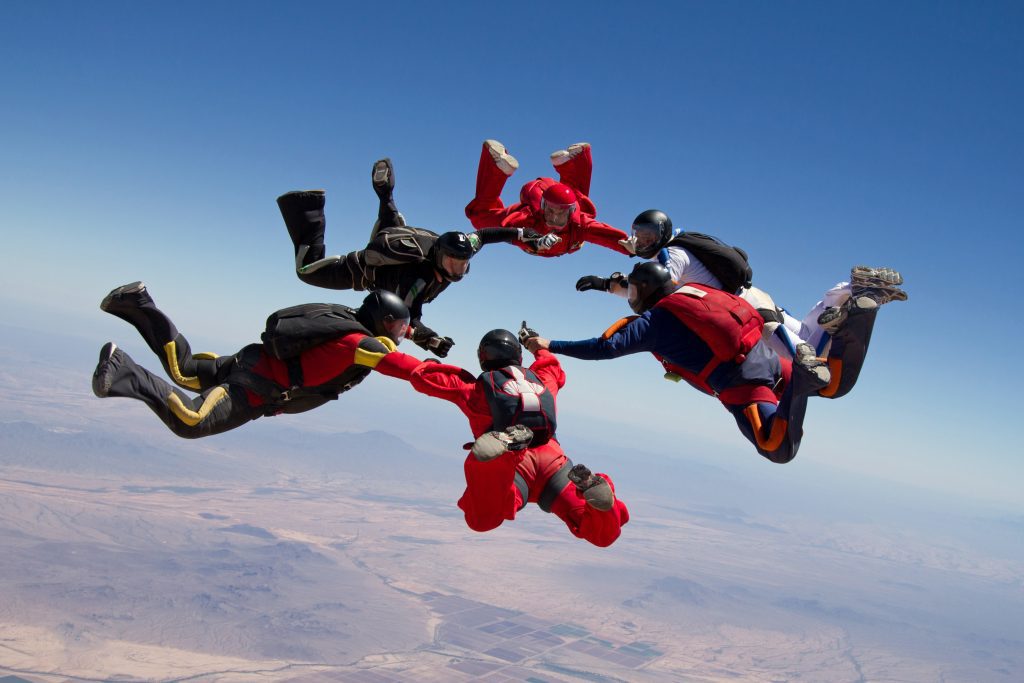How to master the art of high performance in a VUCA world.
What does it take to develop a high-performance team in the face of industry disruption and market volatility? In today’s world, businesses are required to reinvent who they are and why they exist to remain relevant. To do this, leaders and their teams need to develop their capacity to lead confidently and make decisions quickly in the face of ambiguity and uncertainty.
Many teams struggle to deliver consistently and collaborate effectively under this pressure when tensions run high. In order to cope with the stress, people check out or blame others, avoid hard conversations or erupt to find relief and then relationships suffer. Other people struggle with burnout, anxiety or overwhelm, which impacts productivity, creativity and well-being. To make things even more challenging, these types of environments require high trust between team members at a time when individualized development and culture conversations often get deprioritized.
As an executive coach and culture consultant, I dedicate a significant amount of my energy to developing conscious leaders and teams in organizations. Teams are the performance lever of an organization. Most organizations acknowledge the link between team performance and business results but are unclear about what it takes to develop high performance in a VUCA world. Here are a few of the ways conscious leaders develop their teams:
Shift from individual awareness to team consciousness.
The most successful teams operate from full spectrum consciousness. They understand they are part of a system and are aware of and tend to the needs (physical/emotional) and motivations (meaning/making a difference/service to all stakeholders) of the group, maintaining awareness of interdependences and interconnectedness and skillfully managing these tensions. Research in the last decade has proven the advantage of group decision-making over that of even the smartest individual in the group. But the exception to this is when the group lacks harmony or the ability to cooperate. Then decision-making quality and speed suffer.
The important difference between effective teams and ineffective ones lies in the emotional and social intelligence of the group (team consciousness).Teams have an emotional intelligence of their own. It is comprised of the emotional intelligence of individual members plus a collective competency of the group. Emotional intelligence enables individual team members to deal with their own internal responses, moods and states of mind. Social intelligence informs how we understand and interact with others. Leaders with high emotional mastery are effective because they act in ways that leave people around them feeling more capable.They are able to manage themselves effectively under stress and ambiguous circumstances (presence under pressure).
If a team member begins to break down under pressure, other team members can help the person recover by maintaining a positive mental state (learner and player mindset) and treating the mistake or error as a learning opportunity versus lashing out in frustration with blame and criticism. This could also include creating an awareness for the team member by sharing constructive observations about the person’s impact on the group and business results. If the team joins the person in a furthering negative spiral, you will intensify the judgment and emotional state that advances the breakdown in collective performance.
Have a clear mission that generates a powerful, shared purpose and meaningful contribution.
When clarity of mission and a higher purpose are lacking, teams lose focus and flounder in the face of business and market challenges. Knowing what you aspire to and take responsibility for and why it matters is key to sustainable execution and finding deeper meaning in the challenge. This requires asking questions like: Why do we exist? What is our shared purpose? What do we really want to achieve?
We define shared purpose as a unique way of being in service in the world. It defines why you exist as a group and then expressing this with clarity, consistency and constancy as part of your team culture. This includes understanding what makes work meaningful for each person on your team and being a catalyst who inspires and empowers team members to fully express their gifts and talents in service of the mission.
Focus on both “hard” (structure) and “soft” (behavior and culture) for sustainable success.
Most simply, this means the team has clear processes, roles and structures for accountability to achieve its mission “hard” (structure) and a solid emphasis on the human dimension of business “soft” (behavior and culture). We teach a mental model called Three Dimensions of Success that helps keep this focus in balance. Exceptional, sustainable results come from integrating three critical dimensions:
